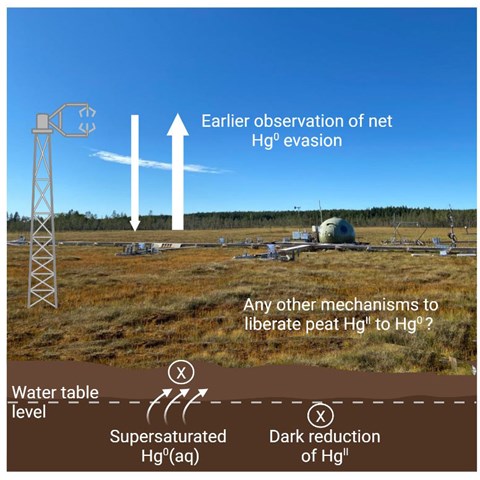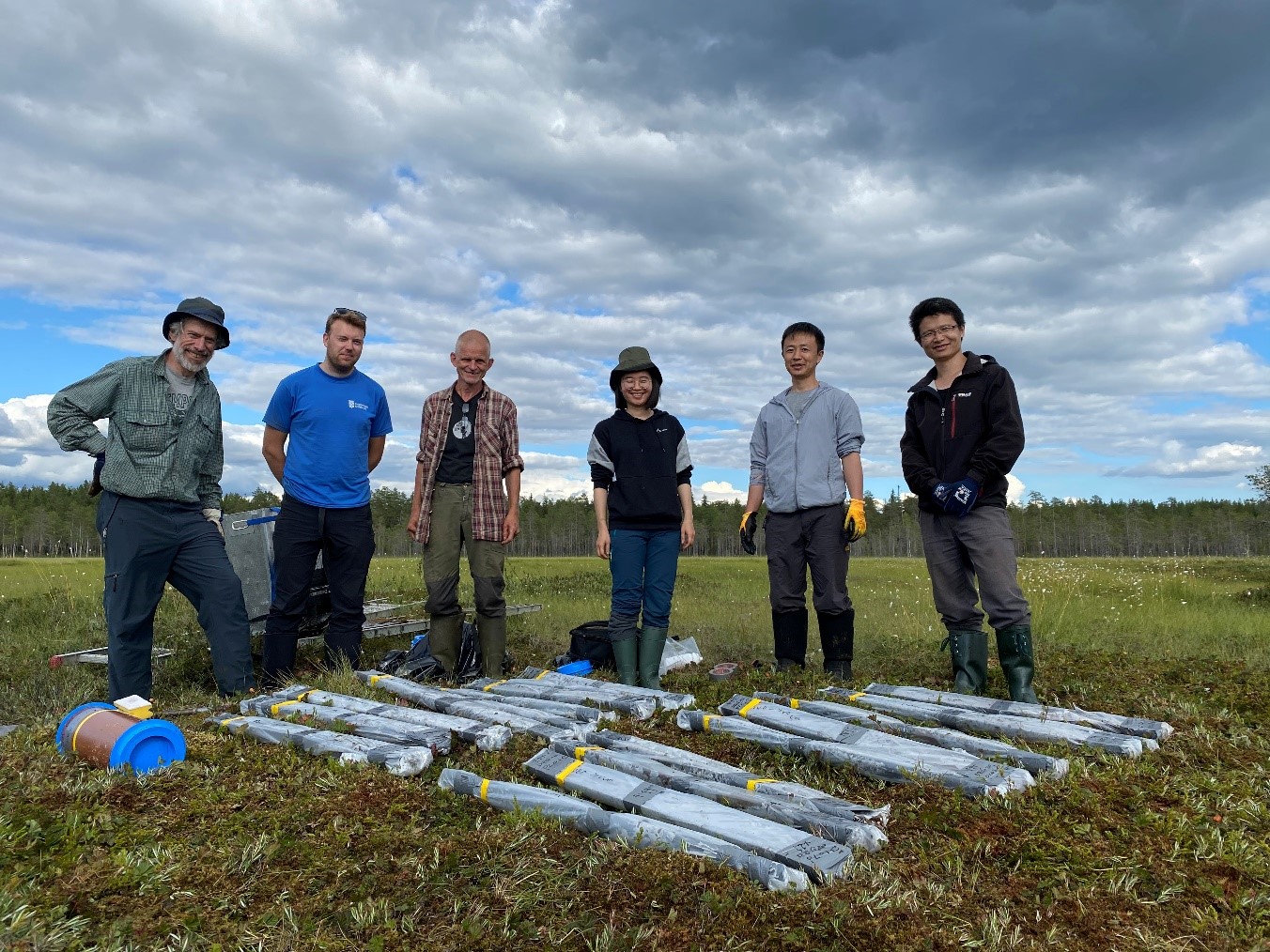Contact
Department of Aquatic Sciences and Assessment, Division of Geochemistry and Hydrology

Contamination with mercury, a potent neurotoxin, is the single most common for European waters failing to the goals of the EU Water Framework Directive. The key to whether mercury can ever lose this dubious distinction is whether mires are continuing to accumulate mercury or not.
Human activities have been increasing mercury emissions to air, atmospheric deposition and subsequently accumulation in peatlands. The leakage of mercury from peatlands into surface water is an important source of mercury contamination in aquatic ecosystems. When international pollution control measures started reducing mercury emissions to air, it became interesting to ask if the amount of mercury in mires would start going down.
Pioneering work on mercury re-emission from peatlands confirms that mercury accumulation rates have decreased. It suggests that legacy mercury, predominantly deposited between 1950 and 1990 could be mobilized, leading to reductions in the amount of mercury stored in peatlands. This raised the possibility that mercury in runoff from peatlands might contribute less mercury to aquatic ecosystems in the future.
A research project enabled L’Oréal-UNESCO Women in Science Laureate Chuxian Li to test a hypothesis about how the legacy of past mercury pollution stored in peat could be released back into the atmosphere. The testing included the first-ever measurements of isotopes (different versions of mercury) in the peat soil gas and dissolved gaseous mercury of shallow groundwater. These results have just been published in the scientific journal Nature Communications.
The isotopes of the mercury in peat soils ruled out one possibility for how mercury from past air pollution in the peat could be turned from a solid form held tightly on the peat into a gaseous form that went back up into the atmosphere. This discovery was hard-won. Just one example of the challenges was that each groundwater mercury isotope measurement required pumping up 500 liters of groundwater from the peat, and then carrying that over a kilometer to the nearest road.
The results also mean that the search continues for a mechanism that could explain the observation that the amount of mercury stored in a mire was reduced by evasion of mercury gas back to the atmosphere. Two possibilities are being explored and will be published soon.
One possibility is that other processes could release the pollution legacy of mercury from soils.
- One such candidate process has just been published in Nature Food and we wrote the accompanying commentary on what this discovery means for the role of peatlands and other vegetation in global mercury cycling, says Kevin Bishop.
The other possibility is that a few months further down the line, results will be ready from a multi-year record of the net ecosystem mercury balance for a boreal mire using improved methods.
- This is just one of several ways in which Aquatic Sciences and Assessment remains involved in mercury research, 50 years after Sweden started monitoring mercury levels in fish, and a decade into the work of the UN Minamata Convention on Mercury. If there is anything that all this mercury research has taught us, it is that the complexity of mercury biogeochemistry still holds many surprises, concludes Kevin Bishop.

The answer to whether peatlands are going to keep supplying the legacy of past mercury pollution to aquatic ecosystems lies in the peat itself. The photo shows the “harvest” of peat cores taken to support the post-doc work of Chuxian Li (3rd from the right). Foto by: Xiangwen Zhang.
Thanks to the staff of the SLUs Svartberget Research Station as well as the Swedish Research Council for funding to both the SITES research infrastructure that supports the Svartberget station and the funding for Chuxian Li’s post-doc.
Li, C., Jiskra, M., Nilsson, M. B., Osterwalder, S., Zhu, W., Mauquoy, D., ... & Bishop, K. (2023). Mercury deposition and redox transformation processes in peatland constrained by mercury stable isotopes. Nature Communications, 14(1), 7389.
Bishop, K., Li, C. & Osterwalder, S. (2024). Plant demethylation in global mercury cycling. Nature Food. https://doi.org/10.1038/s43016-023-00909-4
Bishop, K., Shanley, J. B., Riscassi, A., de Wit, H. A., Eklöf, K., Meng, B., ... & Zhu, W. (2020). Recent advances in understanding and measurement of mercury in the environment: Terrestrial Hg cycling. Science of the Total Environment, 721, 137647
Osterwalder, S., Bishop, K., Alewell, C., Fritsche, J., Laudon, H., Åkerblom, S., & Nilsson, M. B. (2017). Mercury evasion from a boreal peatland shortens the timeline for recovery from legacy pollution. Scientific reports, 7(1), 16022.